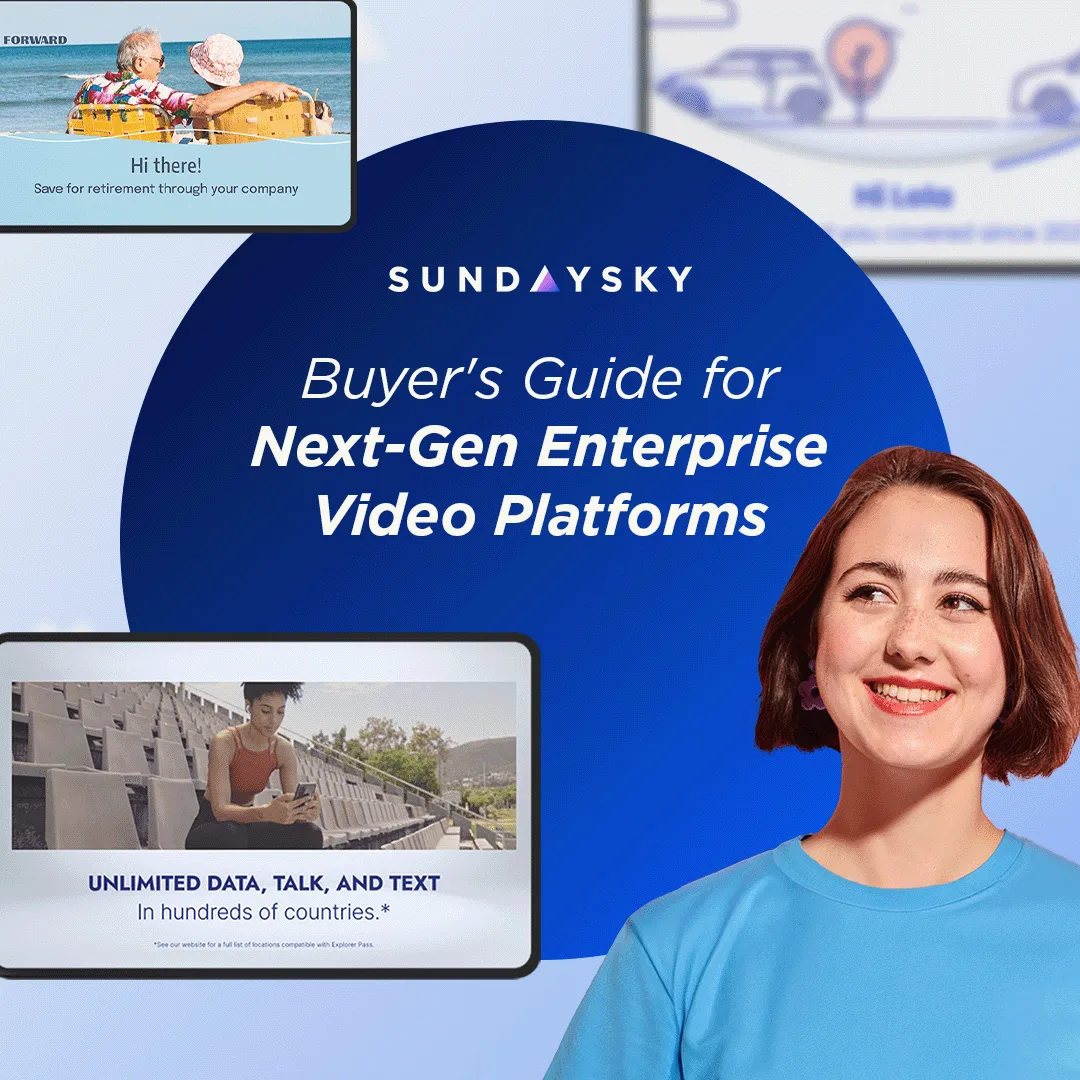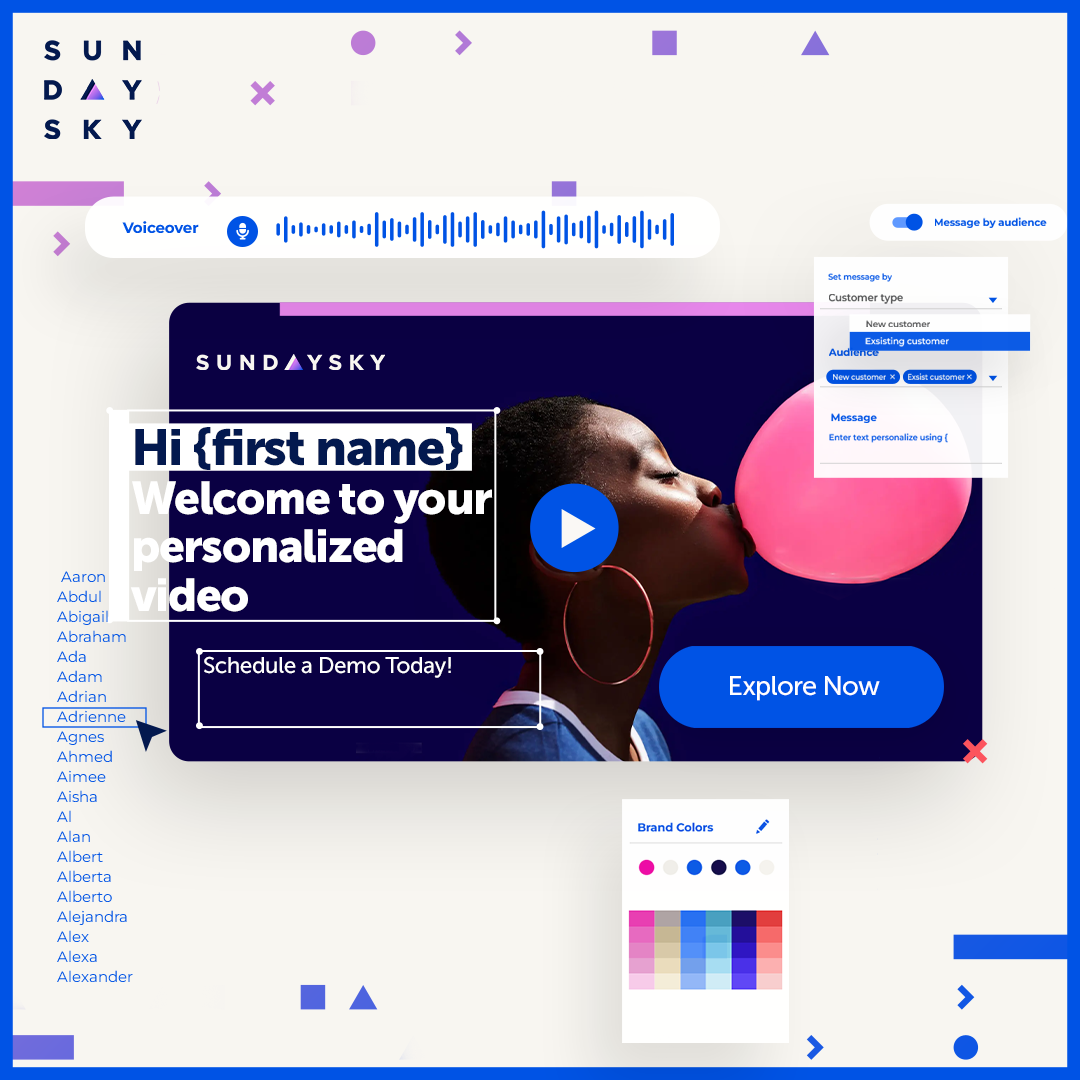As the Head of Customer Success, I lead a team to ensure best in class SmartVideo programs are established and delivered to meet our customer’s performance goals, KPIs and expectations. Part of that process includes supporting the setup of the team on our customer’s side, to ensure they have a strong and skilled “dream team” in place within their organization, working as our direct counterpart to aid in a seamless SmartVideo program.
So, what exactly makes a SmartVideo dream team? Is it a dedicated champion, the people, content of the video, timeliness of responses, or something else? How can your team become a highly coveted “dream team”? Our project, creative, account, and technical teams all share the behaviors and effective habits of our all-star customers:
- The project has a clear goal, conveys a defined set of messages and elicits a limited number of actions. This probably seems like a no-brainer, but sometimes SmartVideo teams are overly ambitious, wanting to cram miles of content and too many calls-to-action into a two-minute video. A five-star SmartVideo is most effective when there’s one main theme that ties the messaging and calls-to-action to the overall goal of the video.
- The SmartVideo team is comprised of a core group of stakeholders dedicated to the success of the project. Identify a group responsible for the planning, implementation, and overall success of your SmartVideo program. Your SmartVideo team should include a brand representative, data expert, project owner, and an overall decision maker. We understand that others may need to join meetings, weigh in, and provide insight from time to time, but the core team should be clearly identified and ultimately responsible for timelines, deliverables, feedback, etc. Avoid having too many cooks in kitchen!
- The team should be open to education and knowledge sharing. You’re the expert on your brand, customers, and messaging, as we’re the experts on SmartVideo. Let’s educate each another on “how it works,” provide guidance on sensitive areas (such as personally identifiable information), share best practices, and take advantage of the expertise on both sides. For example, one of the unique advantages of video is the ability to communicate through visual and spoken elements. The best performing SmartVideos convey brand messages by using visuals to complement the voiceover, which lightens the script load from too much message content.
- Present feedback in a timely manner through the SundaySky-provided project tools. Our review tools, ConceptShare and Zoho, serve as a central repository for all project-related deliverables. Similar to any other project review process, collecting and compiling all feedback from your team prior to sharing with the SundaySky team is more effective than trickling in comments and questions one by one. Dedicate enough time and resources to ensure your team can observe project timelines. If deliverables slip, then it may cause the go-live launch date to slip (and no one wants that to happen).
- Ask lots of questions early on in the project. We can easily accommodate changes at the beginning stages of the planning process, but as the project progresses, changes become far more time consuming and difficult to make. Put forth your new ideas, comments, opinions, and questions while we’re working through the planning brief, style frames, and script. If something in the script isn’t working for you, then explain the problem. If you’re having trouble visualizing our proposals, then ask us to expand. Neither team wants to get to a point where a significant amount of work has been completed to then go back to the drawing board, which again, can push back the launch date.
- Take advantage of personalization, segmentation, and differentiation elements. Our goal is to create unique experiences for every single viewer. Incorporate personalized data elements into the video, especially in the first few scenes, to engage viewers. Consider modifying the tone (music and voiceover) based on customer segment, providing recommendations on weather patterns of different areas, or changing visual elements based on holidays or seasonality. As long as it helps achieve program goals by adding value to the SmartVideo, we want to incorporate it!
- Align on control group methodology, key performance indicators and success measurement. We’re all about measurement here at SundaySky, which is why it’s critical that our customers understand how we measure the success of SmartVideo programs based on a set of key performance indicators. Our control group methodology measures the success of a SmartVideo program by determining the value of a SmartVideo view, and ultimately, incremental business impact.
Bonus: If someone on your team has video experience, even better!




